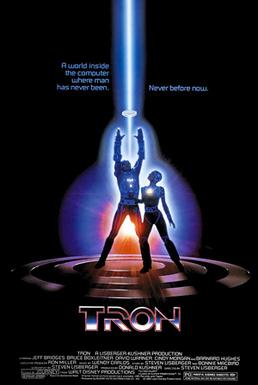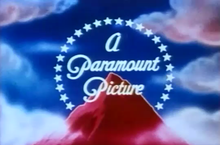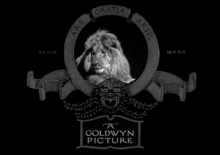
Animation is a filmmaking technique by which still images are manipulated to create moving images. In traditional animation, images are drawn or painted by hand on transparent celluloid sheets (cels) to be photographed and exhibited on film. Animation has been recognized as an artistic medium, specifically within the entertainment industry. Many animations are computer animations made with computer-generated imagery (CGI). Stop motion animation, in particular claymation, has continued to exist alongside these other forms.

Computer animation is the process used for digitally generating moving images. The more general term computer-generated imagery (CGI) encompasses both still images and moving images, while computer animation only refers to moving images. Modern computer animation usually uses 3D computer graphics.

The golden age of American animation was a period in the history of U.S. animation that began with the popularization of sound synchronized cartoons in 1928 and gradually ended in the 1960s when theatrical animated shorts started to lose popularity to the newer medium of television. Animated media from after the golden age, especially on television, were produced on cheaper budgets and with more limited techniques between the 1960s and 1980s.

20th Century Studios, Inc. is an American film studio owned by the Walt Disney Studios, a division of Disney Entertainment, in turn a division of The Walt Disney Company. It is headquartered at the Fox Studio Lot in the Century City area of Los Angeles, leased from Fox Corporation. Walt Disney Studios Motion Pictures distributes and markets the films produced by 20th Century Studios in theatrical markets.

Tron is a 1982 American science fiction action adventure film written and directed by Steven Lisberger from a story by Lisberger and Bonnie MacBird. The film stars Jeff Bridges as Kevin Flynn, a computer programmer and video game developer who is transported inside the software world of a mainframe computer where he interacts with programs in his attempt to escape; it also stars Bruce Boxleitner, David Warner, Cindy Morgan, and Barnard Hughes. Tron, along with The Last Starfighter, was one of cinema's earliest films to use extensive computer-generated imagery (CGI).
While the history of animation began much earlier, this article is concerned with the development of the medium after the emergence of celluloid film in 1888, as produced for theatrical screenings, television and (non-interactive) home video.

Traditional animation is an animation technique in which each frame is drawn by hand. The technique was the dominant form of animation in cinema until the end of the 20th century, when there was a shift to computer animation in the industry, specifically 3D computer animation.

Rankin/Bass Animated Entertainment was an American production company located in New York City, and known for its seasonal television specials, usually done in stop motion animation. Rankin/Bass's stop-motion productions are recognizable by their visual style of doll-like characters with spheroid body parts and ubiquitous powdery snow using an animation technique called Animagic.

Cutout animation is a form of stop-motion animation using flat characters, props and backgrounds cut from materials such as paper, card, stiff fabric or photographs. The props would be cut out and used as puppets for stop motion. The world's earliest known animated feature films were cutout animations, as is the world's earliest surviving animated feature Die Abenteuer des Prinzen Achmed (1926) by Lotte Reiniger.

Sony Pictures Entertainment Inc. is an American diversified multinational mass media and entertainment studio conglomerate that produces, acquires, and distributes filmed entertainment through multiple platforms.

Warner Bros. Animation Inc. is an American animation studio which is part of the Warner Bros. Television Studios, a division of Warner Bros., which is a subsidiary of Warner Bros. Discovery and serves as the animation division and label of Warner Bros.
The Computer Animation Production System (CAPS) was a proprietary collection of software, scanning camera systems, servers, networked computer workstations, and custom desks developed by The Walt Disney Company and Pixar in the late 1980s. Although outmoded by the mid-2000s, it succeeded in reducing labor costs for ink and paint and post-production processes of traditionally animated feature films produced by Walt Disney Animation Studios (WDAS). It also provided an entirely new palette of digital tools to the animation filmmakers.

Motion graphic design, also known as motion design, is a subset of graphic design which combines design with animation and/or filmmaking, video production, and filmic techniques. Examples include kinetic typography and graphics used in film and television opening sequences, and station identification logos of some television channels.
A studio system is a method of filmmaking wherein the production and distribution of films is dominated by a small number of large movie studios. It is most often used in reference to Hollywood motion picture studios during the early years of the Golden Age of Hollywood from 1927 to 1948, wherein studios produced films primarily on their own filmmaking lots with creative personnel under often long-term contract, and dominated exhibition through vertical integration, i.e., the ownership or effective control of distributors and exhibition, guaranteeing additional sales of films through manipulative booking techniques such as block booking.

An animation studio is a company producing animated media. The broadest such companies conceive of products to produce, own the physical equipment for production, employ operators for that equipment, and hold a major stake in the sales or rentals of the media produced. They also own rights over merchandising and creative rights for characters created/held by the company, much like authors holding copyrights. In some early cases, they also held patent rights over methods of animation used in certain studios that were used for boosting productivity. Overall, they are business concerns and can function as such in legal terms.
DreamWorks Pictures is an American film studio and distribution label of Amblin Partners. It was originally founded on October 12, 1994, as a live-action film studio by Steven Spielberg, Jeffrey Katzenberg, and David Geffen, of which they owned 72%. The studio formerly distributed its own and third-party films. It has produced or distributed more than ten films with box-office grosses of more than $100 million each.

The Hot Choc-late Soldiers, also stylized as The Hot Chocolate Soldiers, is an American animated short film that was made by Walt Disney Productions for MGM's 1934 film Hollywood Party, which premiered on June 1, 1934. It is prefaced in the film by a scene where Mickey Mouse appears at the party, performs a brief Durante impression, and then sits down at a piano, after which The Hot Choc-late Soldiers begins to play. Due to stipulations in the contract between Disney and Turner Entertainment, the short was edited out of the film when it was screened on TNT, however Turner was able to negotiate the licenses so that the footage was included in a 1992 VHS release of Hollywood Party and for subsequent releases.

These lists of animated feature films compile animated feature films from around the world and are organized alphabetically under the year of release. Theatrical releases as well as made-for-TV (TV) and direct-to-video (V) movies of all types of animation are included. Currently, the lists don't recognize one release form from another.
Sergio Pablos is a Spanish animator, director and screenwriter. While at the helm of his company, Pablos developed several concepts for animated feature films, most notably the original ideas upon which Despicable Me and Smallfoot were based.

The Disney logo is the corporate logo of The Walt Disney Company since 1956. It is based on a stylized autograph of Walt Disney. Aside from being used by The Walt Disney Company, various Disney divisions and products use the same style/font in their logos, although with some differences depending on the company. The D in the Disney logo makes use of the golden ratio three times.
















